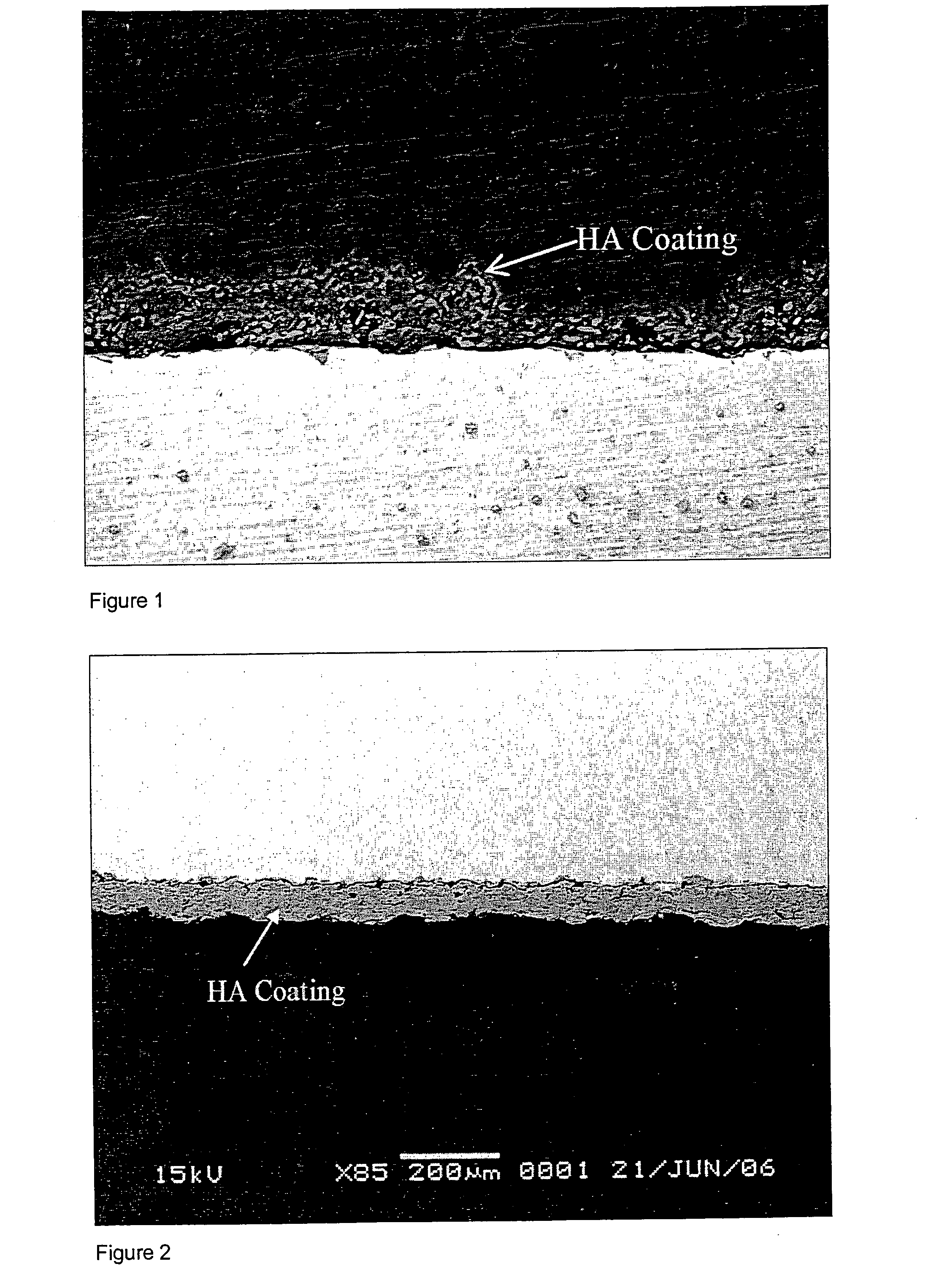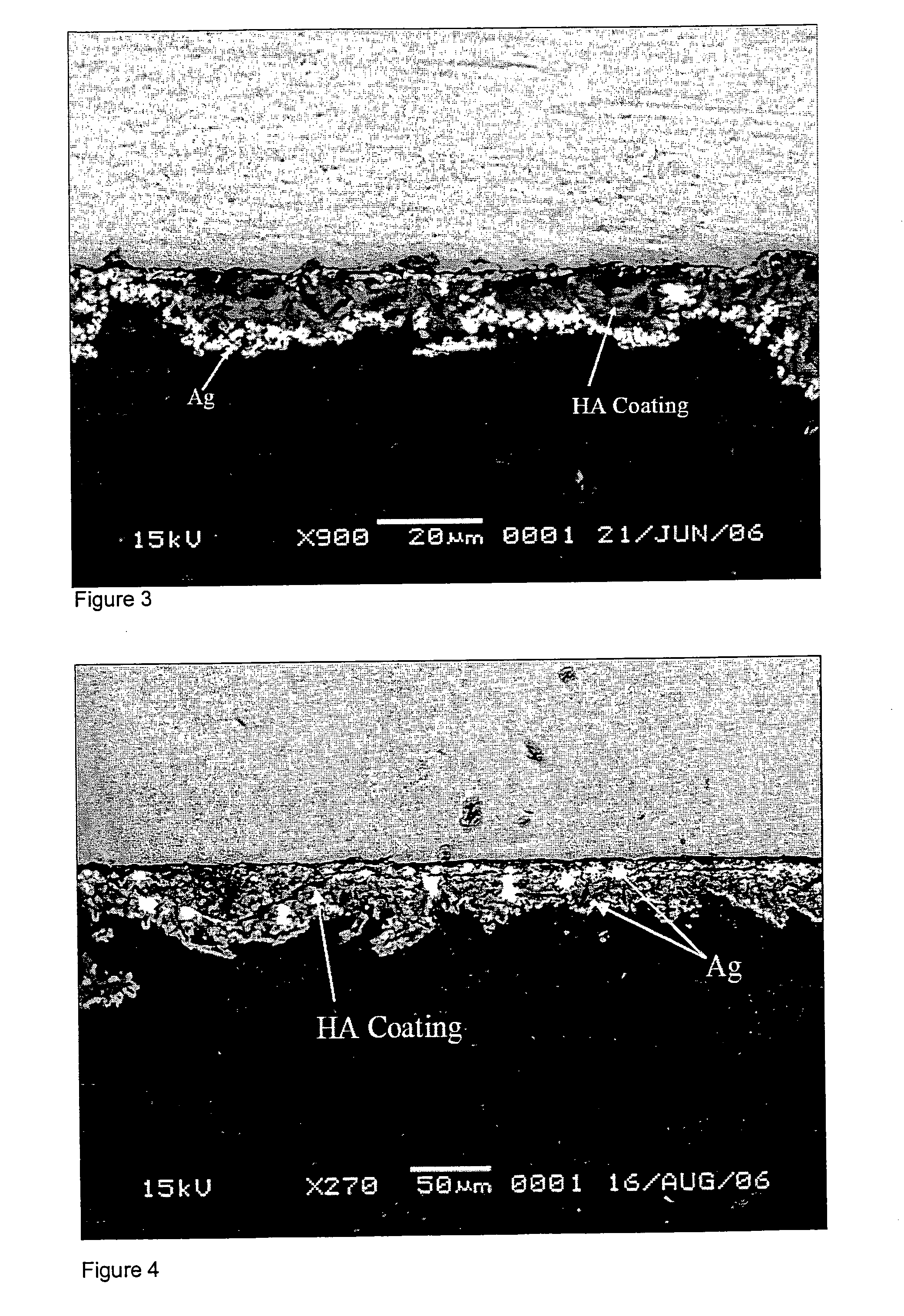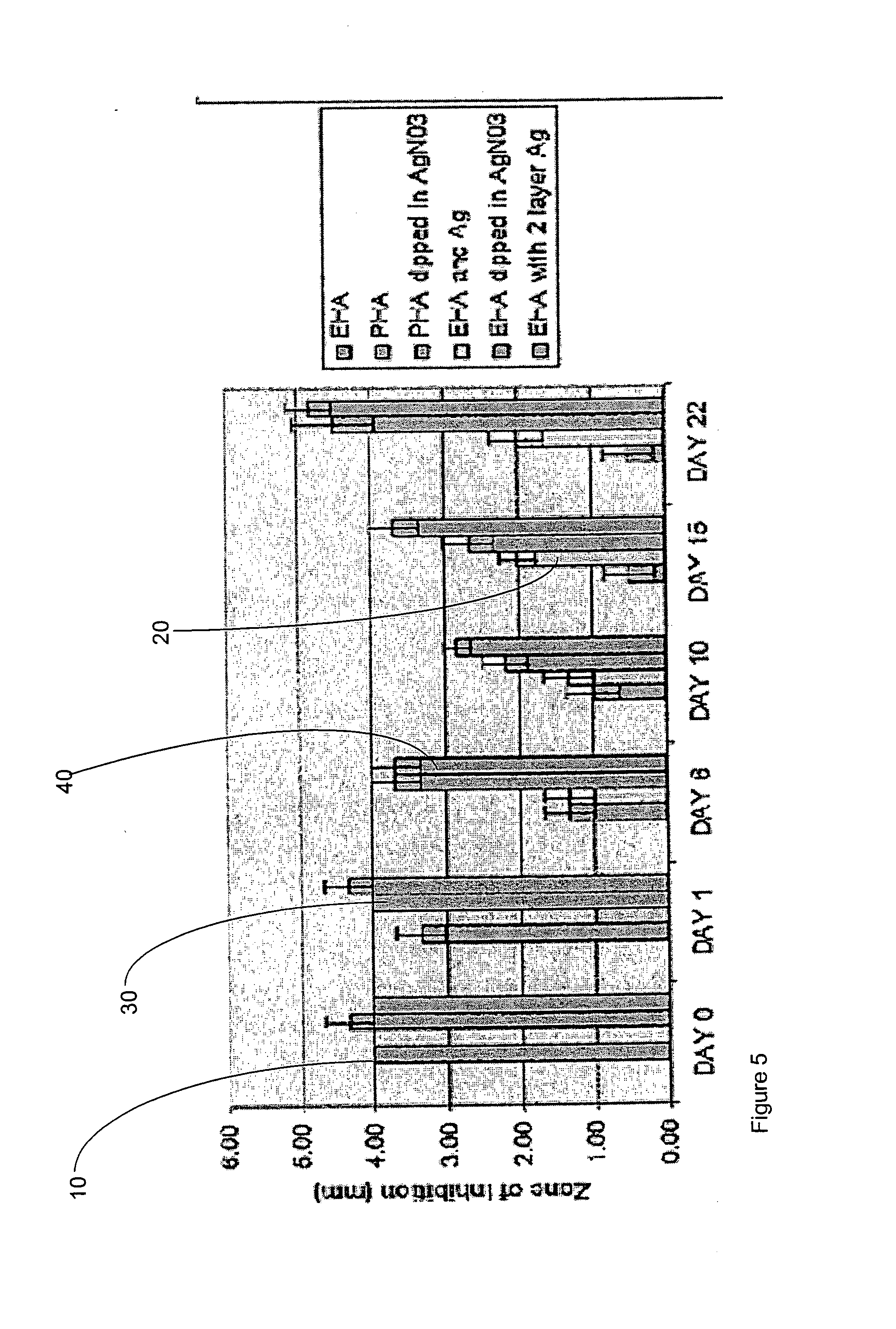Article and a method of surface treatment of an article
a surface treatment and article technology, applied in the field of coatings on articles, can solve the problem of unlikely harm to the therapeutic agent by temperatur
- Summary
- Abstract
- Description
- Claims
- Application Information
AI Technical Summary
Benefits of technology
Problems solved by technology
Method used
Image
Examples
example 1
[0043]A disc was prepared in the same way as comparative example 1. This disc was then immersed in an AgNO3 solution at a concentration of 200 mg / 200 ml i.e. a 0.0058M solution for 24 hours at room temperature and in the dark. FIG. 3 shows an SEM micrograph of the resulting coating. As can be seen from the micrograph, a silver layer between the metal substrate and the hydroxyapatite coating can clearly be seen. The concentration of silver in the layer was measured as being 3.92 atomic percent.
example 2
[0044]A solution for electro-deposition of hydroxyapatite was prepared in accordance with comparative example 1. However, silver nitrate (AgNO3) was added to the solution in an amount of 100 mg / 200 mls of calcium phosphate solution prior to electrochemical deposition. Electrochemical deposition was then performed in the same way as in the comparative example 1 but in the dark. This produced a coating more rapidly and a thicker coating resulted. Silver was deposited within the crystal lattice of the HA. Using backscattered electron microscopy it was not possible to see any bright regions of silver deposition.
[0045]The resulting coating was measured as having a silver concentration of 0.38 atomic percent.
example 3
[0046]A layer of brushite was deposited as in comparative example 1. Silver was then applied by immersion in silver nitrate at 200 mg / 200 mls in the dark. This was dried and then another layer of brushite was deposited and converted to HA in the same way as in comparative example 1 except this was carried out in the dark. Another layer of silver was applied by immersing in solvernitrate solution 200 mg / 200 mls in the dark for 24 hours.
[0047]The resulting microstructure is illustrated in FIG. 4. As with FIG. 3, bright white silver layers can be seen in the micro graph and the silver was measured as being present at a level of 6.5 atomic percent in the coating of example 3.
Experimental Results
[0048]As can be seen from the electromicro graphs and the results of energy dispersive x-ray and x-ray diffraction analyses it is possible to tell the difference between an electrochemically deposited layer of hydroxyapatite and a plasma spray coated layer. It is also clear from the results that ...
PUM
| Property | Measurement | Unit |
|---|---|---|
| concentration | aaaaa | aaaaa |
| electrically conductive | aaaaa | aaaaa |
| porosity | aaaaa | aaaaa |
Abstract
Description
Claims
Application Information
 Login to View More
Login to View More - R&D
- Intellectual Property
- Life Sciences
- Materials
- Tech Scout
- Unparalleled Data Quality
- Higher Quality Content
- 60% Fewer Hallucinations
Browse by: Latest US Patents, China's latest patents, Technical Efficacy Thesaurus, Application Domain, Technology Topic, Popular Technical Reports.
© 2025 PatSnap. All rights reserved.Legal|Privacy policy|Modern Slavery Act Transparency Statement|Sitemap|About US| Contact US: help@patsnap.com



